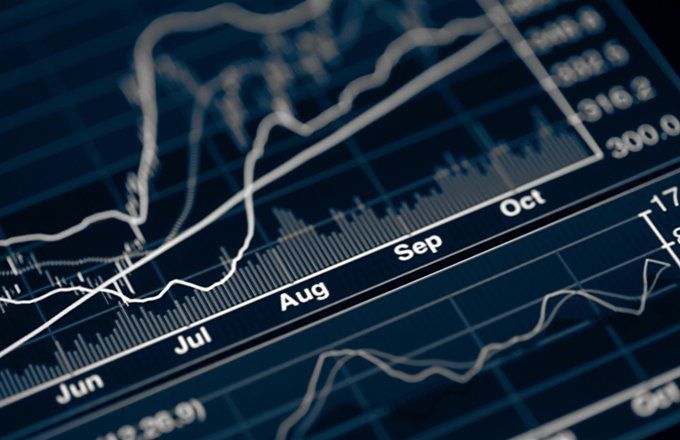
What Is Dollar Volume Liquidity?
Dollar volume liquidity refers to a stock’s or exchange-traded fund’s (ETF) share price times its daily volume. Dollar volume liquidity is important to institutional investors because they make such large trades.
When a stock is highly liquid, it is easier to enter and exit positions while having less impact on the stock’s price.
Key Takeaways
- Dollar volume liquidity is a stock’s share price multiplied by its daily share volume.
- High dollar liquidity makes it easier for institutional traders to buy or sell in large dollar amounts without moving the price substantially.
- High dollar volume tends to decrease the bid-ask spread, but this also depends on share volume, since high volume has a greater impact on the spread.
Understanding Dollar Volume Liquidity
When there is a high level of investor interest in a stock or ETF, and it is traded on a major exchange, it will tend to be highly liquid. High dollar volume liquidity is generally a positive sign, meaning there is significant interest in the stock. However, some investors that employ certain strategies, such as trying to get into a stock before it becomes popular, might prefer stocks with low dollar volume liquidity. A stock can also have high dollar volume while it is falling in value, mainly because falling prices can result in panic selling which drives up the volume.
Another way of looking at the ease of buying and selling a stock is share volume, or volume, which is the number of shares traded in a day.
Share volume, such as knowing that a stock trades one million shares per day, is important but doesn’t tell the whole story. If the stock is only $1, that means only about $1 million worth of stock (dollar volume liquidity) is trading hands each day. If an institutional investor needs to find a place to deploy $100 million, this may not be ideal for them.
On the other hand, a $200 stock that does one million shares means there is $200 million of stock changing hands each day. In a stock like this, it is much easier for the investor to buy or sell the $100 million worth of stock that they need to execute.
Special Considerations
Stocks with high liquidity, especially volume, tend to have tighter bid-ask spreads. This helps reduce the costs associated with trading. High dollar volume liquidity also tends to lead to reduced spreads, but in some cases, it may not. A stock may have a $3,000 price tag and trade 50,000 shares per day. That’s a $150 million in dollar volume liquidity, yet because there aren’t many shares changing hands (relative to high volume stocks which do one million or more) the bid-ask spread may still be quite large.
Generally speaking, investors that place large bets on individual stocks or ETFs will do so in those that have large dollar volume liquidity, because if sentiment changes they want to be able to exit the position as close to market value as possible. Trying to enter or exit a large position in a low dollar volume stock could result in the order moving the price substantially, something the investor doesn’t want. Large orders in low-volume stocks tend to result in slippage.
The concept of dollar volume liquidity and investor interest pertains to other financial markets as well. For example, in the currency market the most traded currencies, and ones that investors bet on the most, are the U.S. dollar, the euro, and the Japanese yen. They are all liquid currencies and have a high trading volume.
Examples of Dollar Volume Liquidity in Several Different Stocks
A low-priced stock can do really high volume resulting in high dollar liquidity. A high-priced stock can do low volume, resulting in low dollar liquidity. Therefore, traders may look at both volume and dollar volume to assess the attractiveness of a stock.
- Assume Citigroup Inc. (C) trades at $66.25 and has an average volume of 13 million shares per day. That’s a dollar volume of $861.25 million. Because of the high volume and high dollar volume, the stock has a one-cent spread and is attractive based on its liquidity.
- Apple Inc. (AAPL) is even more attractive for its liquidity. Assume it trades at $200 and its daily average volume is 27 million. The dollar volume liquidity is $5.4 billion. Despite the higher price, the spread is still tight and the high volume and dollar volume make it attractive from a liquidity perspective.
- Assume that Berkshire Hathaway Inc. (BRK.A) is trading at $302,000 per share. It averages 270 shares per day. The dollar volume is $81.54 million. The high price tag of the stock reduces turnover and volume. This can mean large spreads and a longer amount of time to accumulate or unload a large position.
- Assume that Chesapeake Energy (CHK) trades at $1.40 and averages 50 million shares. The dollar volume is $70 million.
To an institutional investor, BRK.A, AAPL, and C may be more attractive than CHK since they have higher dollar volumes. To a retail trader, CHK, C, and AAPL are preferred over BRK.A. This is mainly due to the high price of BRK.A and the low volume which increases the spread.
Retail traders are more concerned with volume, while institutional traders will consider both volume and dollar volume liquidity.


